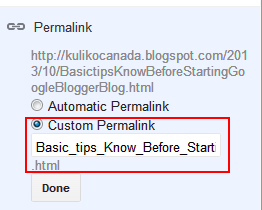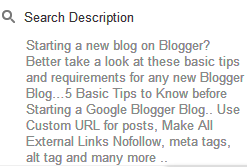These
days most web designers do much more than design the appearance and come to
feel of a website. They frequently play a significant component in writing the
front end code. This means that many in the SEO or Search Engine Optimization
responsibilities should drop on the designer. Even so, there's a massive range
of website designers which don't recognize this topic very well to make a
website which is absolutely optimized for search engines.
This
post is here now to give some essential tips you can improve a website’s SEO
and ultimately their online visibility. Using these foundations in place, you
will expand the peace of mind of perceptive the site you spent time designing
(and developing) is currently a top competitor for search engine exposure. You
might also get some of such strategies also go far in enhancing user
understanding as well.
Keyword Research | Best-Practice
-
Keyword
analysis is definitely an essential part of effective website design. This is
valid if you're a complete beginner or you've been around the globe of Online
marketing to get a long time. Keyword research will allow you to choose the
best area of interest you intend to target, and definitely will let you to
target your time and effort where you'll see the greatest results. You may
target Key-phrases which may have easier competition or more traffic, and the
advantages are going to be given to your website with regards to high search
rankings and more website visitors.
The
most essential step is keyword research when you go with the wrong keyword and
key phrase in which case you will fail in the benefits instead of subject how
it is excellent you’re other steps, For Example - If you go with keyword like "Sell Mobile Phone" & pay $$$$ on SEO services
you'll get $ 0 returns, and you may choose other keyword and key phrase & make
$$$ from using it without investment.
The
Key to a successful website is unique and relevant content …
 |
| Keyword
Research |
- Research – Analyze and pick the appropriate keywords in
URL’s.
- Usage – Do your website pages use the words and Keyword
Phrases you want to be found for?
- Include – Be sure to include your targeted keywords in
the Meta data of your website (URL’s, page titles, images alt tag, body text,
page headlines).
SEO Tools –
Descriptive page URLs | Best-Practice
-
Replace common page descriptors with keywords. Instead
of calling a webpage www.example.com/products_new?cat=2&sort=c. Provide the
search engines some substance to get on to - " www.example.com/caregory/page-name
" informs much more of the story.
- The text in a URL is a
ranking factor
-
Create good anchor text
-
URLS can support
navigation
-
Search engines make use of
the URL in the SERPs
Image Optimization | Best-Practice
-
 |
| Image
Optimization |
The
most overlooked aspects of Search engine optimization is images. Most websites
have a lot of images but very few basically implement SEO tactics for them. Not
putting on SEO methods along with your images (Alt Tag) means that you are
missing out on useful visitors from Search Engine like Google, and that is one
of Google's hottest qualities.
Here
is Search engine optimization (SEO) recommendations that will help you take
benefits famous the concerns which are being done for Images.
- Use Descriptive Image
Names and Files Name
- Use Descriptive Alt Tags.
For Example <img src="SEO-services.jpg" alt="SEO
Services" /
- Use
Descriptive Anchor Text... For Example
To check out all our Cricket videos,
<a href="videos.html">click here</a> for the entire listing.
However, rather than the simple
"click here," you might rewrite the anchor text more descriptively
as:
Feel free to browse all of our <a
href="videos.html">Cricket videos</a>.
Search Engine Friendly
Navigation | Best-Practice -
A
navigation menu is an important factor of a website. A fantastic navigation
menu allows your visitors browse through your website properly … Use
CSS to improve the design of your website navigation menu. Flash, JavaScript as
well as image-based navigation menu might be a dead-end with the major search
engines, like Google.
 |
| Search
Engine Friendly Navigation |
There are two major factors to think about when
designing your website’s navigation menu:
- Your most important
concern must be on your site visitors. Your sites navigation menu must be
designed in the easy structure which will enable your visitors identify the
appropriate material they're looking for easily and quickly.
- The second most essential
concern must be the search engines. Your website’s navigation menu should be
created as search engine friendly as you possibly can, to make sure that Google
as well as all other search engines can crawl and index every page of content.
This can be an important part of the search engine optimization process.
Social Media Integration |
Best-Practice -
Social media is one of the top widely used online
marketing resources nowadays. With no doubt, social media marketing provides
coverage for your specific customers like not any other program of
online marketing can perform. Integrating social media to your website can
provide importance in the number of ways. It may give a funnel for new website
visitors to subscribe as well as engage with the brand, it may promote social
sharing by visitors via their particular social media accounts, and it may have
a better impact if it comes to your website’s rankings in search
results.
Here are 6 ways to integrate your social media into
your web design ..
- Adding Social Share
Buttons to Your Website/Blogs
- Adding Facebook Comments
to Your Website/Blogs
- Adding Google Authorship to
Website Contributors
- Allow social logins to
make it easier to connect with you
- Make your design social
media friendly
- Make content shareable
- Incorporate Facebook
Reviews into your website
- Embed videos when
appropriate
As a final point, I would personally suggest uploading
an XML
Sitemap on your server, because this will help the Google
find, index, and rank your website.
All this tips are useful in 2014 and even it future...
To
find out how a Website and SEO will help your business get found on the Search
Engine, generate new leads, and turn them into paying customers, go to: http://www.kuliko.ca








